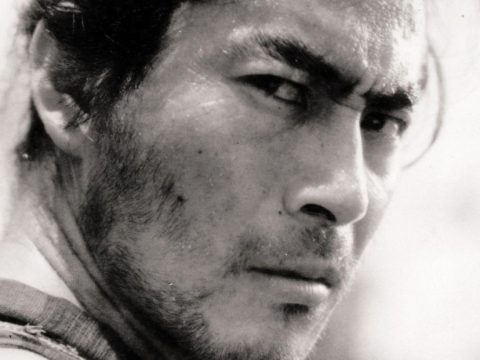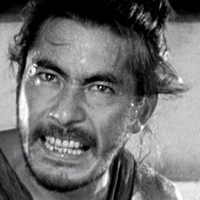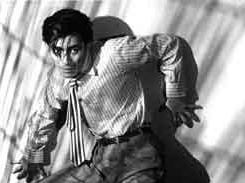
Though a lot of people may disagree with this statement, I’m of the mind that nothing is sacred. Remakes, sequels, “reimaginings,” throw it all out there, it won’t make a bit of difference. The original is in no way soiled so long as it remains available, and every now and then something interesting comes along and makes people think differently about their stance on rehashing classic properties. Now, I’m not saying that Samurai 7 is an example of that phenomenon, but it does tread on ground that many would consider sacred: the films of Akira Kurosawa, of which Seven Samurai is arguably held the highest.
 To spin the remaking and reimagining here to even greater heights, we have the Samurai 7 manga by Mizutaka Suhou, which is an adaptation of Gonzo’s anime. The hook, for those that haven’t seen the show before, involves taking Kurosawa’s original tale and giving it the futuristic steampunk treatment, a mix that makes for a very strange combination of Warring States Period Japan and one filled with cyborgs and powerful katana that can level entire buildings, even on their lowest power setting.
To spin the remaking and reimagining here to even greater heights, we have the Samurai 7 manga by Mizutaka Suhou, which is an adaptation of Gonzo’s anime. The hook, for those that haven’t seen the show before, involves taking Kurosawa’s original tale and giving it the futuristic steampunk treatment, a mix that makes for a very strange combination of Warring States Period Japan and one filled with cyborgs and powerful katana that can level entire buildings, even on their lowest power setting.
Volume one follows Katsushiro, a would-be samurai that quickly gets entangled in the plight of a poor village looking for samurai to protect it against the coming onslaught of cyborg bandits. After he nearly gets a taste of battle during a hostage situation, he helps start the process of finding samurai to aid the villagers, who are pretty much at the end of their rope. It’s not easy to find real deal samurai anymore, though, and these need to specifically be pure of heart and not in it for money, or glory, or anything more than their duty as samurai.
By the end of chapter 2, the seven are gathered, and it’s off to Kanna Village to get to work. Suhou does a good job of keeping the pages turning during most of this first volume, even if the artwork is hit or miss throughout. It’s difficult to pinpoint one particular thing about the art that stands out above the rest. Sometimes the mechanical elements—the giant mechs in the opening, the battle cruiser near the end of the volume, etc.—are worth noting, while at other times they’re just as inconsistent as the faces of the main cast.
 Samurai 7 isn’t a violent series, but it also doesn’t hold back when there needs to be a beheading or two. Still, it remains somewhat respectful by not loading down the chapters with page after page of action, choosing instead to focus on the story and the introduction of the primary cast. The series only spans two volumes, though, so while it isn’t an intimidating investment, it makes one wonder just how rushed the rest of the experience is going to be.
Samurai 7 isn’t a violent series, but it also doesn’t hold back when there needs to be a beheading or two. Still, it remains somewhat respectful by not loading down the chapters with page after page of action, choosing instead to focus on the story and the introduction of the primary cast. The series only spans two volumes, though, so while it isn’t an intimidating investment, it makes one wonder just how rushed the rest of the experience is going to be.
Taken as pure manga entertainment, Suhou’s manga is a decently enjoyable take on a timeless tale. It’s interesting enough to see the direction in which this interpretation of the film is going, and how different characters are going to be introduced. While it might be more enjoyable on some levels, especially coming from someone that was never really smitten with Gonzo’s series in the first place (though Seven Samurai 20XX on Playstation 2 is flat-out hilarious in all the wrong ways), it’s tough to recommend it to those that have already watched the series.
Publisher: Del Rey
Original story: Akira Kurosawa
Manga: Mizutaka Suhou
Rating: OT 16+





